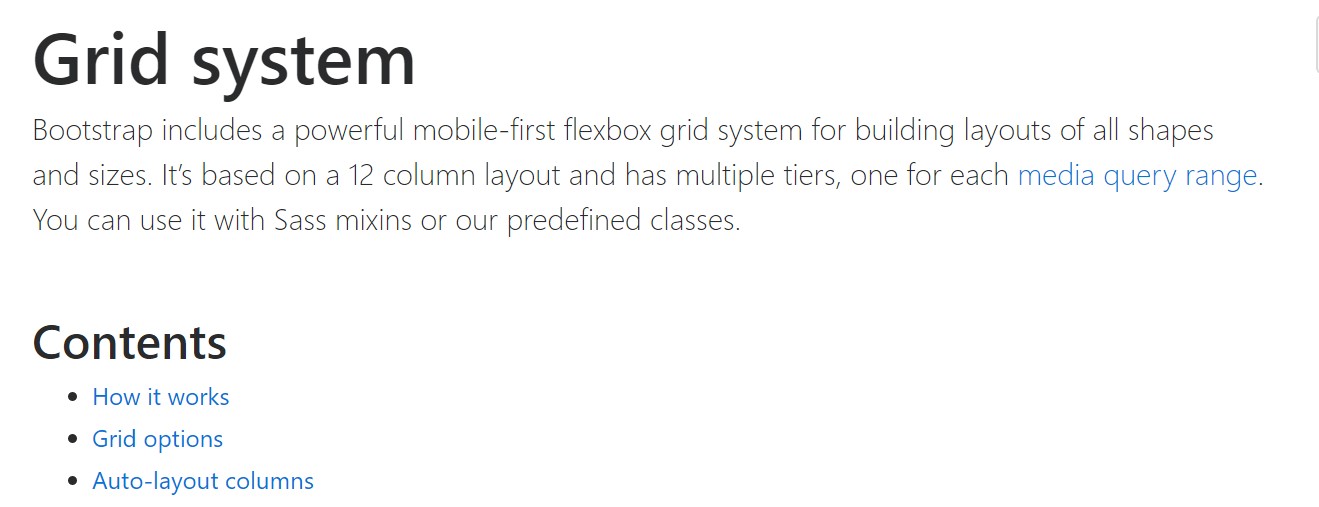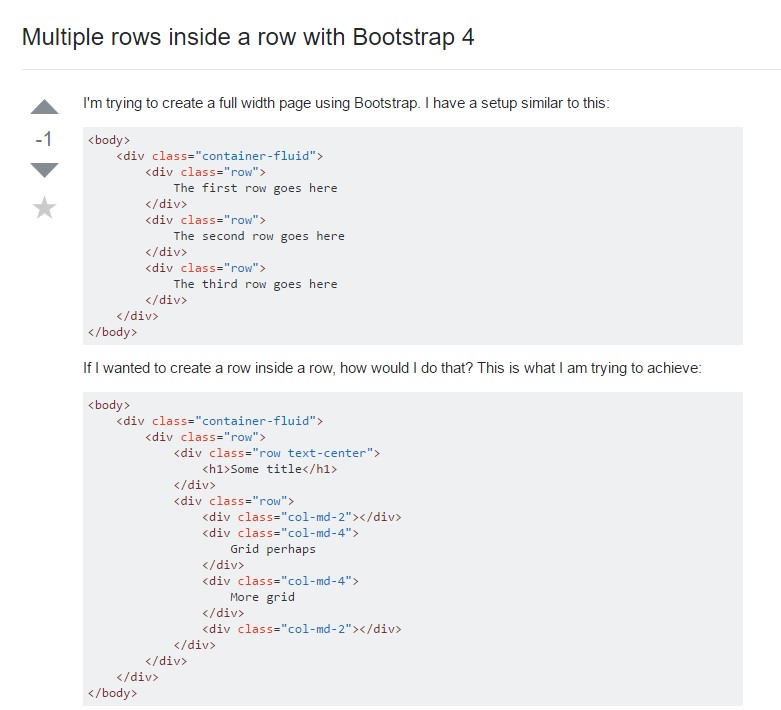Bootstrap Row Class
Overview
Exactly what do responsive frameworks complete-- they deliver us with a handy and functioning grid environment to put out the material, making sure if we identify it correct so it will operate and display effectively on any sort of device no matter the measurements of its display screen. And a lot like in the building each framework involving some of the most preferred one in its newest edition-- the Bootstrap 4 framework-- incorporate simply a handful of main features that provided and incorporated effectively can assist you make nearly any kind of appealing visual appeal to suit your layout and vision.
In Bootstrap, normally, the grid structure gets designed by three basic elements which you have very likely previously found around looking at the code of certain web pages-- these are actually the
.container.container-fluid.row.col-Supposing that you're pretty new to this whole entire thing and in some cases may ask yourself which was the right manner these three needs to be set within your markup here is really a simple method-- everything you need to remember is CRC-- this abbreviation comes regarding Container-- Row-- Column. And given that you'll quickly adapt seeing the columns serving as the inner component it's not vary possible you would definitely misjudgment what the very first and the last C represents. ( click here)
Few words regarding the grid system in Bootstrap 4:
Bootstrap's grid system employs a variety of rows, columns, and containers to design and line up material. It's created using flexbox and is totally responsive. Listed here is an example and an in-depth look at how the grid interacts.
The aforementioned scenario creates three equal-width columns on small-sized, standard, large size, and also extra sizable devices using our predefined grid classes. All those columns are centralized in the web page with the parent
.containerHere's in what way it performs:
- Containers give a solution to centralize your web site's materials. Use
.container.container-fluid- Rows are horizontal bunches of columns that make certain your columns are definitely lined up properly. We employ the negative margin method on
.row- Material should be set within columns, and also just columns may be immediate children of Bootstrap Row Class.
- Thanks to flexbox, grid columns with no a determined width will instantly layout with same widths. For example, four instances of
.col-sm- Column classes signify the variety of columns you wish to employ removed from the potential 12 per row. { In this way, in the case that you would like three equal-width columns, you can absolutely apply
.col-sm-4- Column
widths- Columns feature horizontal
paddingmarginpadding.no-gutters.row- There are 5 grid tiers, one for each and every responsive breakpoint: all breakpoints (extra small), small, medium, big, and extra huge.
- Grid tiers are built on minimum widths, implying they relate to that tier and all those above it (e.g.,
.col-sm-4- You can use predefined grid classes or Sass mixins for additional semantic markup.
Take note of the restrictions and problems around flexbox, like the failure to apply a number of HTML features such as flex containers.
Although the Containers provide us fixed in max size or expanding from edge to edge straight area on screen with small helpful paddings all around and the columns provide the means to delivering the display space horizontally-- once again with certain paddings about the certain content giving it a space to breathe we're heading to direct our consideration to the Bootstrap Row element and all the great solutions we can easily utilize it for designating, straightening and delivering its components using the clear brand new to alpha 6 flexbox utilities that are really some classes to bring in to the
.row-sm--md-The best ways to employ the Bootstrap Row Inline:
Flexbox utilities can be employed for developing the ordination of the features put inside a
.row.flex-row.flex-row-reverse.flex-column.flex-column-reverseRight here is precisely how the grid tiers infixes get utilized-- for instance to stack the
.row.flex-lg-column.flex-Together with the flexbox utilities regarded a
.row.justify-content-start.justify-content-end.justify-content-center.justify-content between.justify-content-aroundThis counts as well to the upright location which in Bootstrap 4 flexbox utilities has been addressed just as
.align-.align-items-start.row.align-items-end.align-items-centerA different solutions are aligning the objects by their base lines being adjusted the class is
.align-items-baseline.align-items-stretchAll the flexbox utilities spoken of so far maintain separate grid tiers infixes-- put them right prior to the very last word of the corresponding classes-- such as
.align-items-sm-stretch.justify-content-md-betweenFinal thoughts
Here is actually precisely how this important but at first look not so adjustable component-- the
.rowLook at some online video guide regarding Bootstrap Row:
Connected topics:
Bootstrap 4 Grid system: formal information

Multiple rows inside a row with Bootstrap 4

One more trouble: .row
causes horizontal overflow
.row
